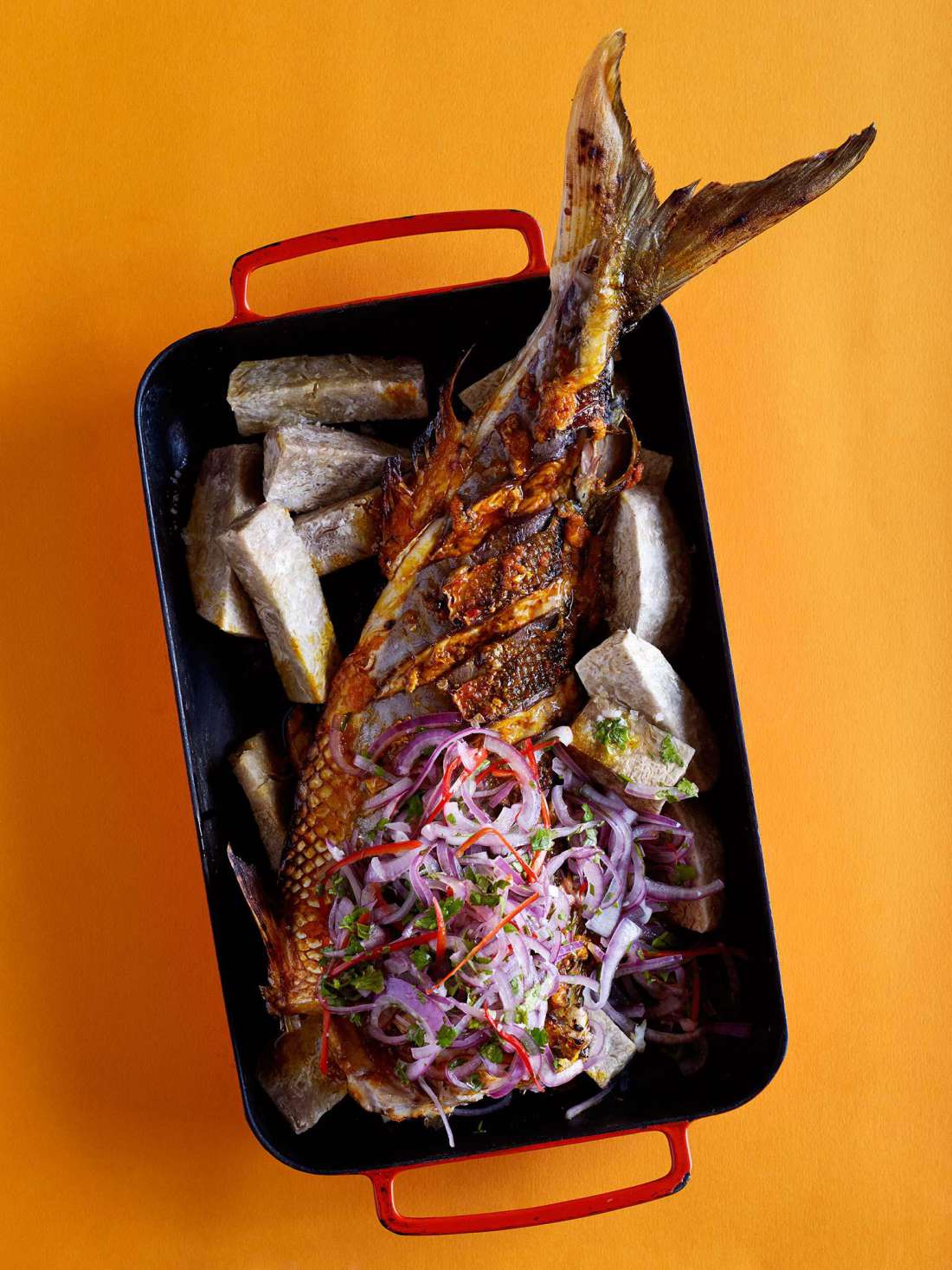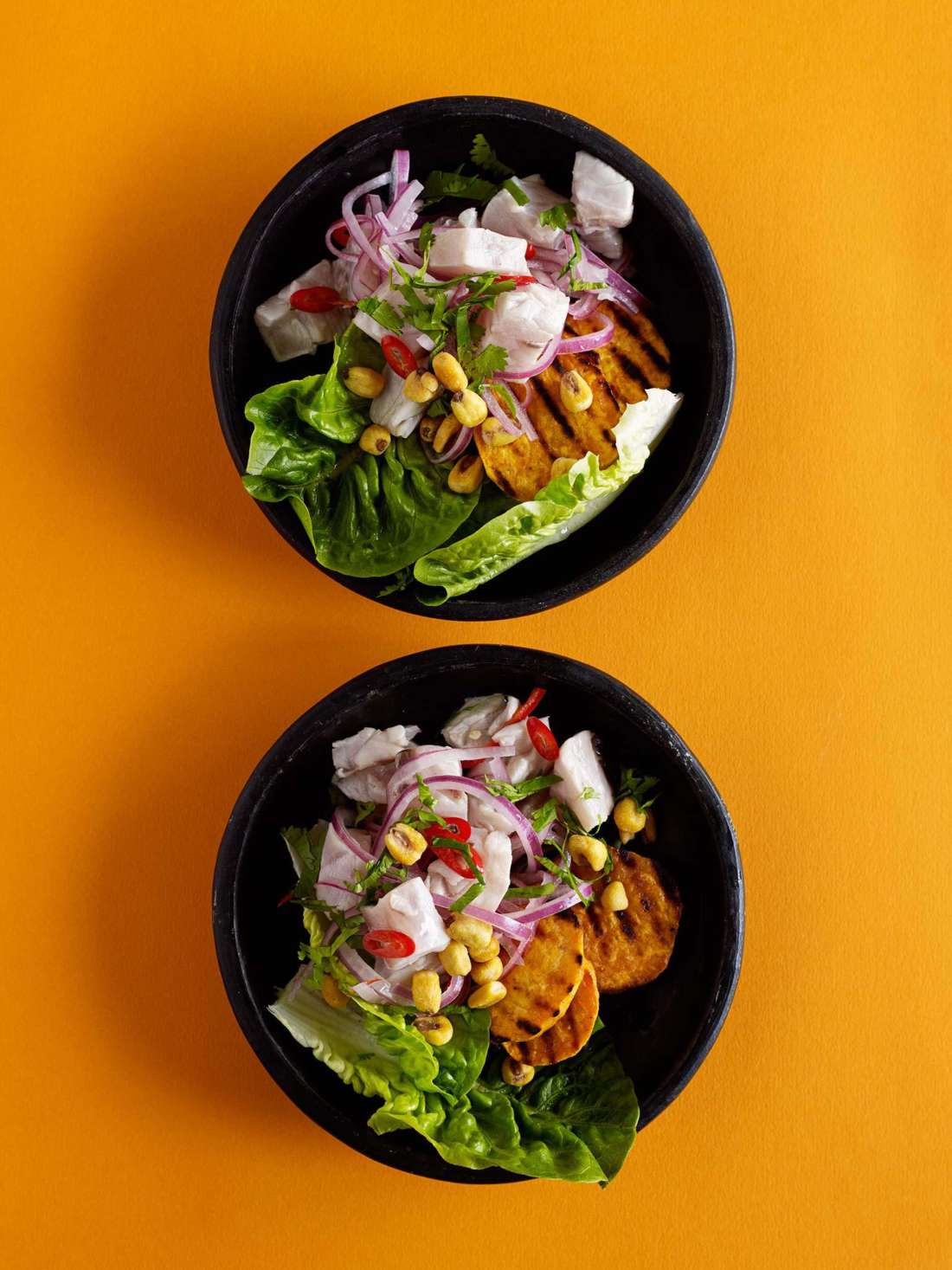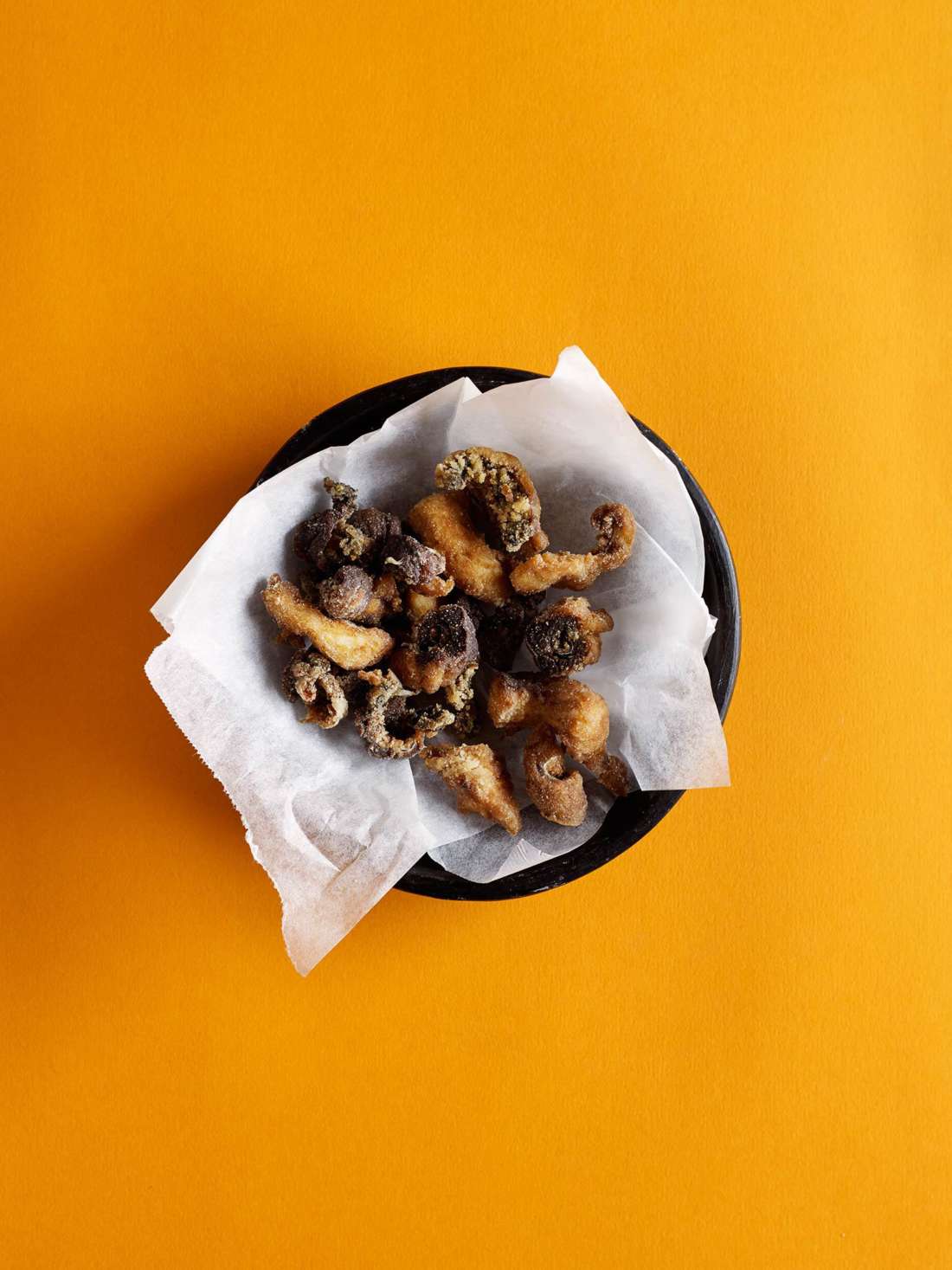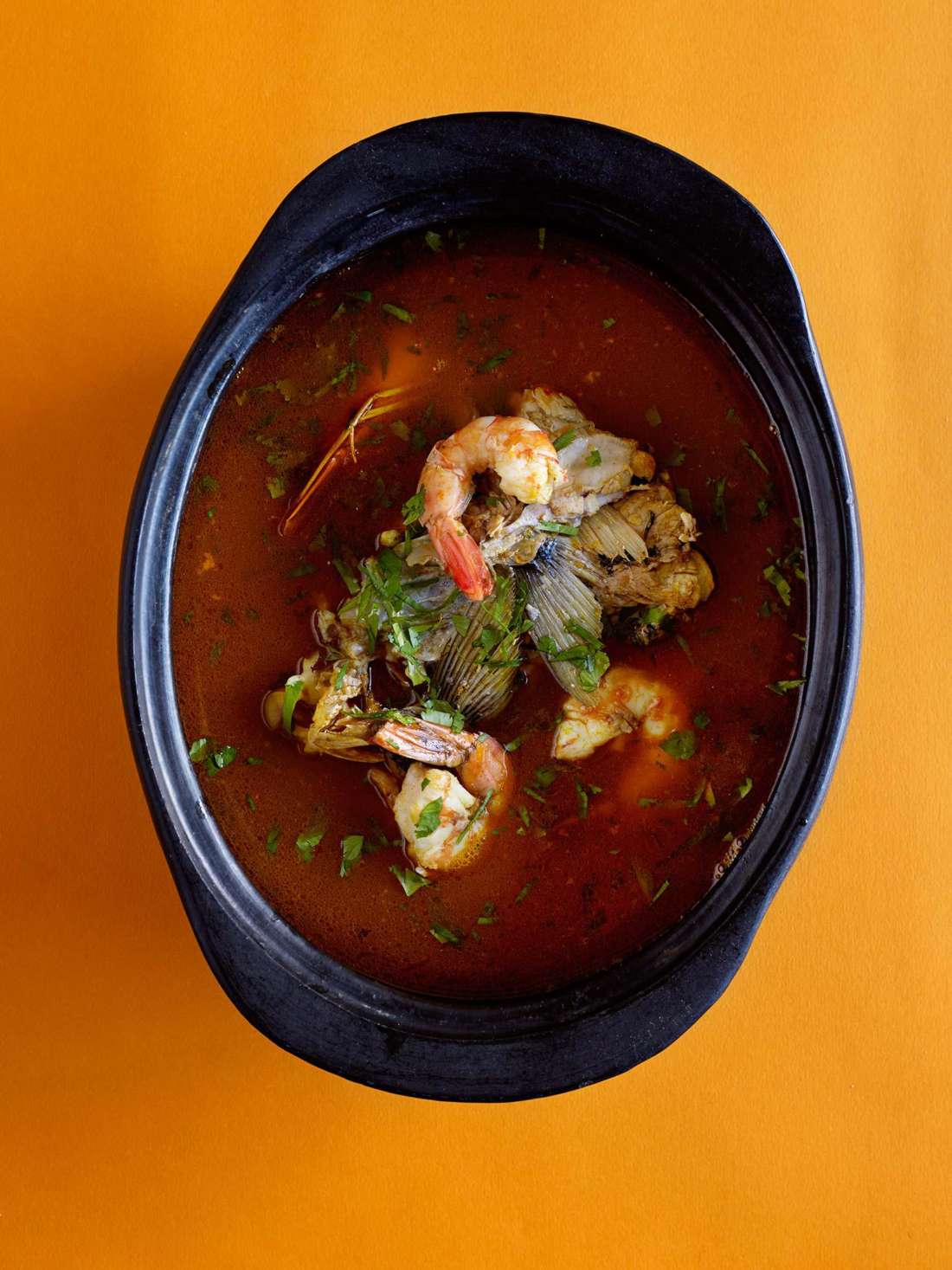Category — Recipes

1 Fish 4 Ways
On a recent visit to Lima I ate at La Picanteria, a fantastic seafood restaurant in the Surquillo district. The bar counter is covered in fresh fish and you basically buy one the size you need for your group and choose a few different preparations. If you have a really fresh fish to hand, try any or all of these recipes – the ceviche is super easy, while the others are a bit more time consuming but rewarding. You can do this with a kahawai, as I have – it’s great raw as it’s nice and firm and can handle the punchy flavours in the other recipes.
I had a 2kg fish but you could use two 1kg fish or similar and adjust the cooking time for the baked fish accordingly. Chilcano is a Peruvian fish broth and confusingly, also a delicious long drink made with pisco. The chicharrons are a fun way to use up fish skin – you can save fish skin in the freezer to do this for a larger group.
The chilli used in Peru is the hot and fruity orange aji amarillo. Serrano is a good substitute or failing that, any red chilli will add the right heat. Annatto is used in these dishes to obtain the vibrant yellow colour and adds an agreeable earthy taste. The seeds are available from specialty food stores. The fish would get served with cassava, but I have used taro as it’s easier to find here, or you could substitute potato.
If you make the baked fish on its own, you will need to make the annatto oil (or substitute any olive oil and forgo the colour) and chilli paste from the chilcano recipe.
Serves 4
2kg fresh fish, gutted and descaled

For the ceviche
1 small red onion, thinly sliced
1 fillet off the fish (about 300g), skinned (save for frying if you like)
juice of 1 meyer lemon
juice of 2 limes
1 small clove garlic, crushed
1 chilli, sliced 2 corn cobs, peeled
1 medium orange kumara, peeled
1 tablespoon olive oil
cos lettuce leaves and chopped coriander
Put the red onion in a bowl of cold water for 10 minutes then drain.
Cut the fish into small dice, put in a bowl and mix with the onion, lemon juice, lime juice and garlic. Season with salt and set aside.
To cook the corn and kumara, bring a large pot of water to the boil, add the corn cobs and boil for 2 minutes then drain.
Slice the kumara into ¾cm slices, toss with the corn cobs and olive oil and season with salt.
Heat a barbecue or grill pan to medium, grill the kumara and corn for 5 minutes each side until charred and tender. Cut the corn off the cobs and put on a dish with the kumara, cos lettuce leaves and the fish. Scatter with coriander.

For the chicharrons
sunflower or other vegetable oil for frying
½ cup flour (I use extra fine polenta flour) seasoned with salt
Slice the skin and offcuts of the fish saved from the ceviche into strips.
Fill a deep fryer or a saucepan or wok with oil (do not fill more than one third). Heat the oil to 180°C.
Dip the fish strips in the flour then fry in the oil for 2-3 minutes until crisp. Eat immediately with chilli sauce to dip, if desired.

For the chilcano
½ cup olive or sunflower oil
¼ cup annatto seeds
3 small yellow capsicums
2-3 red or orange chillies
fish head
4 large whole prawns, heads removed and kept, bodies peeled
1 litre fish or vegetable stock
juice of 1 lemon chopped coriander to serve
To make the annatto oil, in a small heavy saucepan, heat the oil over medium heat. Add the annatto seeds and cook, stirring constantly, until the oil becomes a rich, orange-red colour – about 5 minutes. Remove from the heat and allow to cool. Strain the oil into a jar, discarding the seeds, and keep covered in the refrigerator for several months.
To make the chilli paste, cut the capsicums into large pieces, discard the seeds and place in a steamer. Cut the chillies in half, discard the seeds and add to the steamer. Steam over a saucepan of simmering water for 10 minutes then remove from the heat and let sit until cool enough to handle. Peel the capsicums and chillies, discarding the skin. Put the flesh in a food processor and process to a paste.
To make the soup, heat 2 tablespoons of the annatto oil in a large saucepan over a medium heat, add the fish head and prawn heads and fry for a few minutes then add half the chilli paste and cook for 2 minutes. Pour in the stock (season if necessary – some stocks are pre-salted) and simmer for 30 minutes.
Taste and season. I like to add a dash of fish sauce – though not traditional, it adds enormous depth to many fish dishes. Add the prawn bodies for the last minute of cooking. Stir through the lemon juice.
Scatter with chopped coriander before serving.

For the baked fish
1 small red onion, thinly sliced
¼ cup coriander, chopped
1 red or yellow chilli, sliced
1 clove garlic, crushed
juice of lemon
juice of 2 limes
800g taro
fish fillet from above on the bone
Put the red onion in a bowl with cold water for 10 minutes then drain and put in a bowl with the coriander, chilli, garlic, lemon and lime juice. Mix well and season with salt. Set aside.
Wearing gloves, peel the taro and cut lengthwise into thick wedges (about 3cm). Put in a large saucepan of cold water and bring to the boil. Cook for 15 minutes until just tender. Drain well then toss with salt to taste and plenty of oil.
Preheat the oven to 200°C.
Make deep slashes in the flesh of the fish, place in a roasting dish and rub all over with 3 tablespoons of the annatto oil. Leave to marinate for 15 minutes. Rub again with the remaining chilli paste from the chilcano then season well with salt. Arrange the taro around the fish and bake for 15 minutes or until the fish is cooked.
Remove the fish to a serving dish, stir the taro around and bake a further 5 minutes. It is important to cook taro thoroughly so test one to make sure it’s soft and fluffy before serving with the fish and salad.
Photography Aaron McLean.